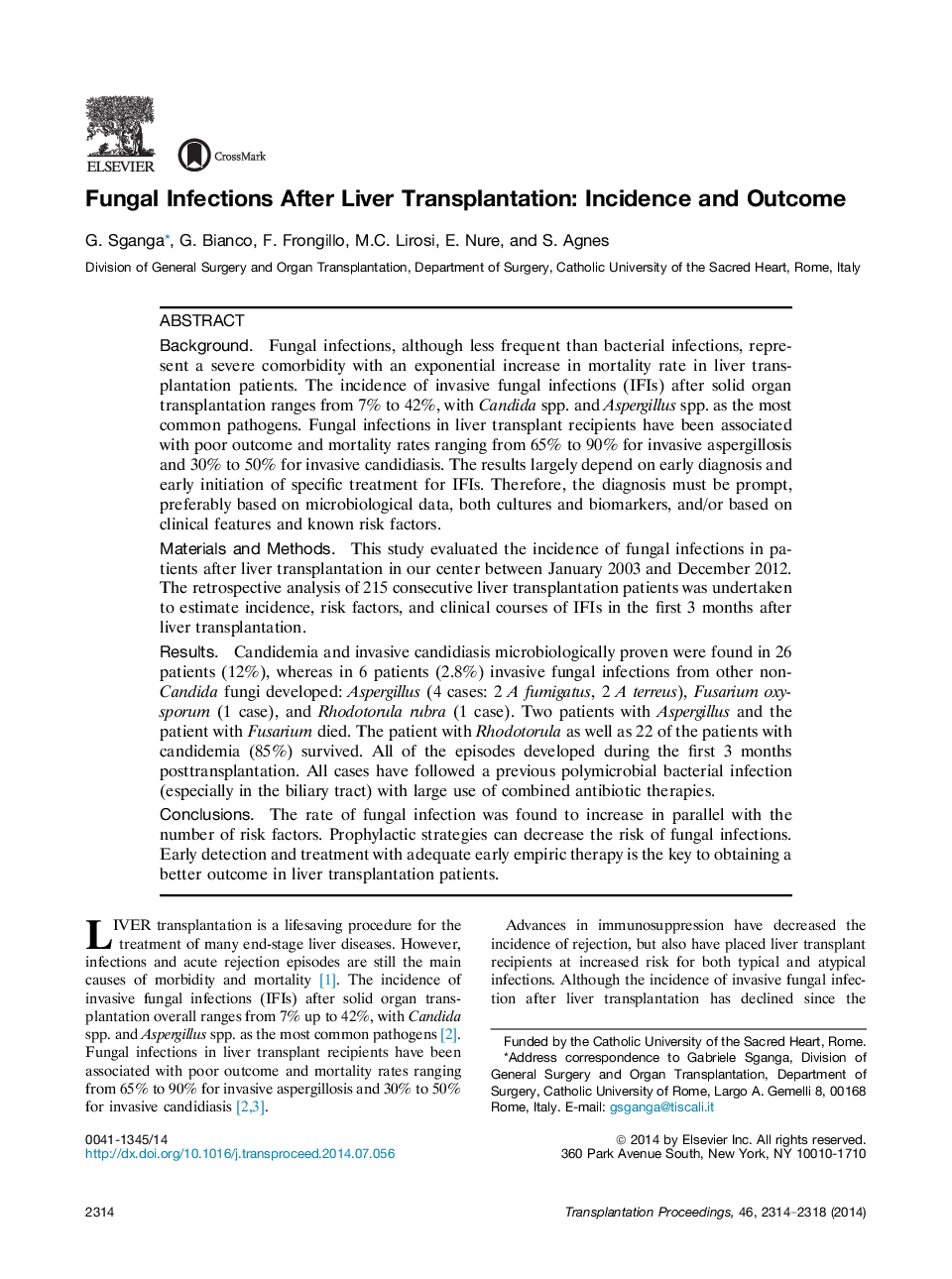| کد مقاله | کد نشریه | سال انتشار | مقاله انگلیسی | نسخه تمام متن |
|---|---|---|---|---|
| 4256446 | 1284523 | 2014 | 5 صفحه PDF | دانلود رایگان |
BackgroundFungal infections, although less frequent than bacterial infections, represent a severe comorbidity with an exponential increase in mortality rate in liver transplantation patients. The incidence of invasive fungal infections (IFIs) after solid organ transplantation ranges from 7% to 42%, with Candida spp. and Aspergillus spp. as the most common pathogens. Fungal infections in liver transplant recipients have been associated with poor outcome and mortality rates ranging from 65% to 90% for invasive aspergillosis and 30% to 50% for invasive candidiasis. The results largely depend on early diagnosis and early initiation of specific treatment for IFIs. Therefore, the diagnosis must be prompt, preferably based on microbiological data, both cultures and biomarkers, and/or based on clinical features and known risk factors.Materials and MethodsThis study evaluated the incidence of fungal infections in patients after liver transplantation in our center between January 2003 and December 2012. The retrospective analysis of 215 consecutive liver transplantation patients was undertaken to estimate incidence, risk factors, and clinical courses of IFIs in the first 3 months after liver transplantation.ResultsCandidemia and invasive candidiasis microbiologically proven were found in 26 patients (12%), whereas in 6 patients (2.8%) invasive fungal infections from other non-Candida fungi developed: Aspergillus (4 cases: 2 A fumigatus, 2 A terreus), Fusarium oxysporum (1 case), and Rhodotorula rubra (1 case). Two patients with Aspergillus and the patient with Fusarium died. The patient with Rhodotorula as well as 22 of the patients with candidemia (85%) survived. All of the episodes developed during the first 3 months posttransplantation. All cases have followed a previous polymicrobial bacterial infection (especially in the biliary tract) with large use of combined antibiotic therapies.ConclusionsThe rate of fungal infection was found to increase in parallel with the number of risk factors. Prophylactic strategies can decrease the risk of fungal infections. Early detection and treatment with adequate early empiric therapy is the key to obtaining a better outcome in liver transplantation patients.
Journal: Transplantation Proceedings - Volume 46, Issue 7, September 2014, Pages 2314–2318
